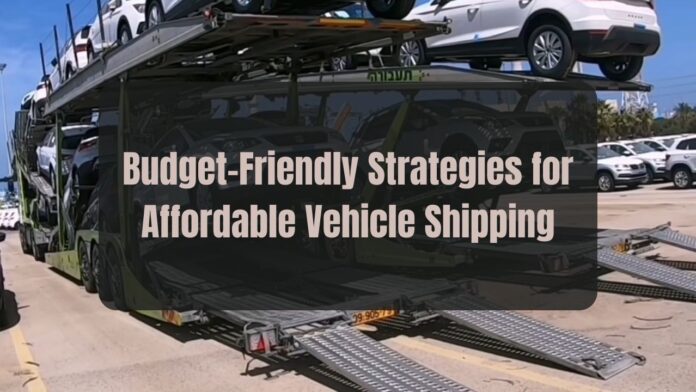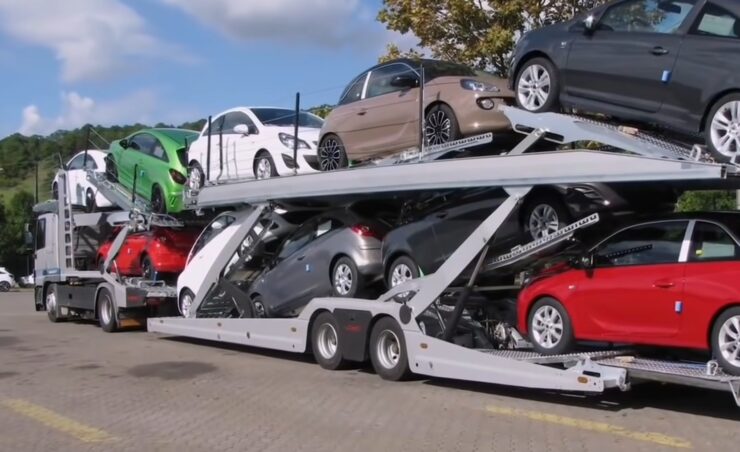
In this in-depth guide, we’ll explore some fantastic strategies to help you ship your vehicle without breaking the bank. We understand that transportation costs can quickly add up, so we’re here to share valuable tips and tricks to save you money.
Understanding the Basics
When it comes to shipping your vehicle, you have two main options: open transport and enclosed transport. Open transport is like taking your car on a road trip with a bunch of other vehicles on a large carrier. It’s a cost-effective choice for most vehicles. On the other hand, enclosed transport is like giving your car a first-class ticket. It provides extra protection and is typically more expensive.
Several factors affect the cost of shipping your car. The distance plays a significant role, with longer distances generally costing more. The size and weight of your car also matter, as larger and heavier vehicles require more resources to transport. Additionally, as you can see at transportmasters.net the time of year and the pickup and delivery locations can impact the overall cost of car transport service.
Researching and Comparing Companies
Now that you have an understanding of the basics, it’s time to find a reliable vehicle shipping company. Here’s what you need to know:
Start by checking online research and review platforms. Websites like TransportReviews and Trustpilot offer valuable insights from real customers. Read through the reviews and pay attention to factors like customer service, reliability, and timeliness.
Consider a few important factors when selecting a car shipping company. Look for a company with a solid reputation and positive customer reviews. Verify that they have insurance coverage to protect your car during transportation. Compare pricing and payment options, and ensure they offer the specific services you need.
Get quotes from multiple companies and compare the costs. To get accurate quotes, provide detailed information about your vehicle, including its make, model, and any modifications. Be aware that the cheapest option may not always be the best. Consider the company’s reputation, services, and insurance coverage alongside the price.
Maximizing Cost Savings
Let’s explore some strategies to maximize your cost savings:
1. Flexible pickup and delivery dates
Being flexible with your pickup and delivery dates can often lead to cost savings. Shipping companies may have more availability during certain times, and they might offer discounts for filling up their empty spots.
2. Terminal-to-terminal shipping
If you’re comfortable dropping off and picking up your vehicle at a specified terminal, you can save some money. Terminal-to-terminal shipping eliminates the need for the driver to navigate through specific locations, reducing transportation costs.
3. Choosing open transport
Consider opting for open transport instead of enclosed transport, especially if your vehicle doesn’t require extra protection. Open transport is the more budget-friendly option, as it allows for multiple vehicles to be transported at once.
4. Shipping multiple vehicles together
Do you have multiple cars to ship? Transporting them together can save you money. Shipping companies often provide discounts for shipping multiple cars simultaneously, as it maximizes the carrier’s capacity.
5. Negotiating discounts and promotions
Don’t hesitate to negotiate with shipping companies. Ask if they have any ongoing promotions or discounts. Sometimes, a simple conversation can lead to significant savings.
Preparing Your Vehicle for Shipping
Now that you’re ready to book your shipment, it’s crucial to prepare your car adequately:
1. Cleaning the vehicle
Give your car a thorough cleaning before shipping it. This helps identify any existing damages and ensures a smooth inspection process at both pickup and delivery.
2. Documenting pre-existing damages
Take pictures of your vehicle from different angles, focusing on any pre-existing damages. This documentation will serve as proof if any additional damages occur during transportation.
3. Securing loose parts and personal items
Remove any loose parts or personal items from your car. These items can become loose during transportation and cause damage.
4. Ensuring the vehicle is in working condition
Make sure your car is in good working condition before shipping it. This includes checking the battery, tire pressure, and fluid levels. If your vehicle isn’t in working order, it may cause delays or additional charges.
5. Reducing fuel levels
Keep the fuel level in your vehicle low, ideally around a quarter tank. This reduces weight and minimizes the risk of fuel leakage during transportation.
Booking and Scheduling
Now that you’ve prepared your car, it’s time to book and schedule the shipping process:
1. Providing necessary documents and information
When booking your vehicle shipment, be ready to provide the necessary documents and information, such as your vehicle’s registration, insurance, and identification.
2. Understanding the shipping timeline
Shipping timelines can vary based on distance and other factors. Be sure to understand the estimated timeline provided by the shipping company, so you can plan accordingly.
3. Confirming pickup and delivery details
Double-check the pickup and delivery details with the shipping company. Ensure they have the correct addresses and contact information to avoid any confusion or delays.
4. Verifying insurance coverage
Before finalizing the booking, verify the insurance coverage provided by the shipping company. Understanding their policy will give you peace of mind in case any damage occurs during transportation.
Receiving and Inspecting Your Vehicle
Once your vehicle arrives, it’s time to receive and inspect it:
1. Documenting the condition upon delivery
Thoroughly inspect your vehicle upon delivery and document its condition. Take pictures and note any damages that may have occurred during transportation.
2. Checking for any damages
Compare the condition of your vehicle upon delivery to the pre-existing damages you documented before shipping. If there are any additional damages, notify the shipping company immediately.
3. Addressing claims and insurance processes
If you discover any damages, contact the shipping company to initiate the claims process. Provide them with the necessary documentation and work with them to resolve the issue.
Conclusion
You’re now equipped with budget-friendly strategies for affordable vehicle shipping. By understanding the basics, researching and comparing companies, maximizing cost savings, and preparing your vehicle, you can save money while ensuring a smooth shipping process.
Remember to stay involved, communicate with the shipping company, and document any damages upon delivery. Whether you choose traditional shipping companies or alternative options, these strategies will help you transport your vehicle without breaking the bank.








